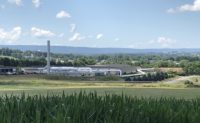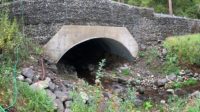A three-office California design firm that has made sustainability central to its projects, large and small, was chosen by the editors of the ENR regional publications as the Design Firm of the Year 2012.
LPA Inc., Irvine, rose in this year's Top Design Firms ranking to No. 17 from No. 20 last year as its revenue climbed 11%, to $48.2 million—a notable accomplishment in the still-tough architectural market.
The 47-year-old firm, which also has offices in Rose-ville and San Diego, focuses on education, from K-12 schools through universities, as well as on corporate and public-sector projects. It provides a range of services: architecture, sustainability, planning, interior design, landscape architecture, graphics and engineering, including structural, plumbing, mechanical, electrical and civil.
What also sets LPA apart is its deep green character. For example, more than 80% of its 200 employees are Leadership in Energy and Environmental Design Accredited Professionals.
"We are creating a new model for the industry," says Dan Heinfeld, president. "We've become an integrated design firm that uses sustainability to lead the design process in which solving problems is valued over chasing fashion."
Heinfeld says the firm has been concentrating on education projects since the early 1990s. But he has seen rapid changes in that market over the past three years.
"There are fewer projects down the line, and those that are coming are smaller in size and scale," he says. "We're still working in that sector, but future funding in this state has become an issue, obviously, and projects now rely almost exclusively on local bonds and are not totally reliant on state funding."
In the state's tight-budget environment, one of the keys to LPA's new model is creating "more sustainability with less," according to Heinfeld. Cases in point are two projects, both LEED-Gold rated, that were recently completed for California public universities.
The $32-million Recreation and Wellness Center at California State University, East Bay, in Hayward, used an inventive approach to tilt-up concrete that allowed the building to operate without an active heating system, even though it is located in the often chilly Bay Area hills. The project was financed totally with student fees.
The Student Recreation Center for California State University, Northridge is designed to exceed by 28% the state's Title 24 energy-efficiency requirements. The folding profile of the 138,000-sq-ft building contains numerous sustainable elements including: displacement ventilation, solar control fins and screens, use of recycled materials, a rooftop photovoltaic array, water-efficient native landscaping, low-flow plumbing fixtures, rainwater harvesting, Forest Stewardship Council-certified wood products and natural daylight for 90% of its usable space.










